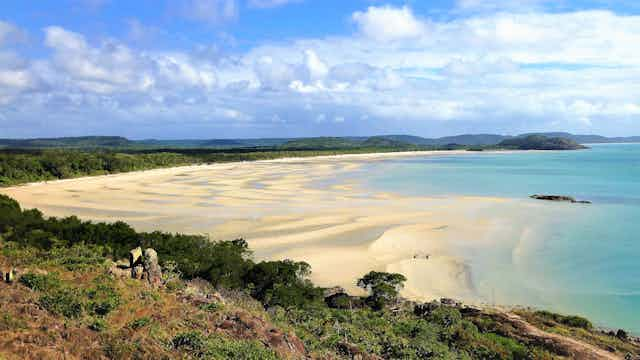Ignoring history can lead to a futile repetition of past mistakes. In the new wave of enthusiasm to “unlock” northern Australia, the federal government has overlooked the past and espoused an extraordinarily rosy vision of the future.
Northern development slipped back onto the national agenda in 2013. The Coalition’s 2030 Vision for Northern Australia, a 2014 green paper and 2015 white paper revived old debates.
Each extols the north’s capacity to “become an economic powerhouse”. They market the north as a place of “untapped promise” and a future “trade gateway” for the “booming Asia-Pacific region”.
Hyperbole aside, the most revealing aspect of these declarations is their lack of historical perspective. They fleetingly acknowledge that governments and entrepreneurs have been unlocking the north for more than 150 years. But these nods to history lack the insights needed to inform policy.
The minister for resources and northern Australia, Matt Canavan, said in October 2016:
Too often people assume that northern development has failed in the past. That is bunkum.
Canavan’s dismissiveness typifies recent government pronouncements. The white paper devoted less than a page to historical reflections. It identified only one vague lesson: “business and governments should stick to what they do best”.
Do the white paper and similar effusions offer a fresh approach, or do they merely recycle old rhetoric and set course for another slump of interest in northern development?
The white paper sets high expectations. It revives the idea that the north can deliver an economic bonanza, along with the old assumption that the north is a bountiful land whose riches have somehow slipped the grasp of the nation.

Learn from past lessons
Only about 5% of Australians live in the tropics, but it is not a mysterious or unopened land of limitless, untapped potential.
The area with greatest economic potential ─ northeast Queensland ─ was developed in the 19th century, though not by a centre-driven push for northern development as Canavan insinuates.
In the Northern Territory and the north of Western Australia, the record of development is not so impressive, but not for lack of trying. Enormous expense and effort were invested in trying to fill Australia’s “empty north”.
Enterprises either crashed, like rice-growing at Humpty Doo, or muddled along with ever-diminishing expectations, like the Ord River Irrigation Scheme.
Despite the failures, there was no lack of talking up the north. Since colonisation, enthusiasts have trumpeted the north’s potential, using language similar to that of the white paper. Many, like the explorer Michael Terry, lauded northern Australia as “a land of promise”.
But many expressed doubts. The geographer Griffith Taylor is the best known, although numerous others agreed that the north was a “poor tropical environment” that lured the unwary into “unsuccessful attempts to develop a delusive land”.

Even official investigators often offered modest appraisals. The 1937 Payne-Fletcher Report advised Australians to jettison “the delusion that great prospects … lie hidden in the Territory”. Their warning that inflated expectations of the north merely invited disillusionment was endorsed by major metropolitan newspapers. But northern development would rise and fall again in the three decades after the second world war.
This period offers lessons that are being overlooked today.
By the 1950s, much of the mystery about the tropics had dissipated. Scientific appraisals were more substantial; first-hand experience was more common; and agricultural, pastoral and mining ventures were testing the limits of the north’s potential. A CSIRO submission to a 1975 inquiry into population argued that the northern areas with best prospects were already being successfully exploited.
The argument for populating the north on grounds of national security lost potency too. Although defence policy in the 1960s and 1970s emphasised the protection of northern borders, fears of an Asian invasion had softened.

By the time Gough Whitlam created the first-ever ministry for northern development in 1972, the north was a declining priority. The Whitlam government’s crowded agenda ensured it would be demoted still further.
Beware development directed from the centre
Yet today’s grand governmental pronouncements ignore the efforts and arguments of the past, and pretend that the vision of an untapped north of limitless potential is new. The region’s communities would benefit from a more sober discussion. A centre-driven narrative devalues the social, political and cultural needs of the people who live in the north.
A national benefit test, where development projects are measured for their potential to benefit the whole nation, encourages extreme expectations. Without a middle ground, plans for developing the north may again founder.
Further development and population growth in the north are achievable. Tourism can grow; technology and science can boost industry outputs; governments can improve infrastructure and communications. But a sharper understanding of the history of northern development is vital.
A return to the hyperbole of the past tells us nothing about the north itself, but a lot about the historical vacuum within which policy is too often formulated.

